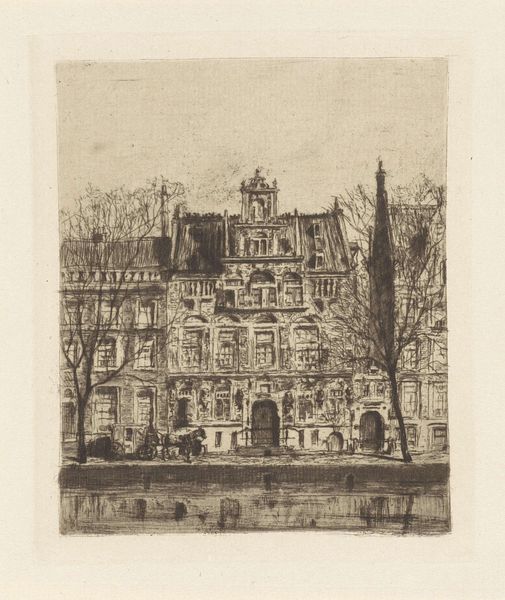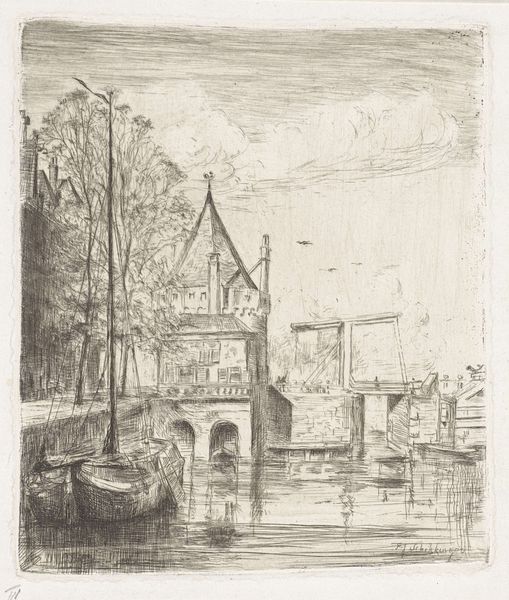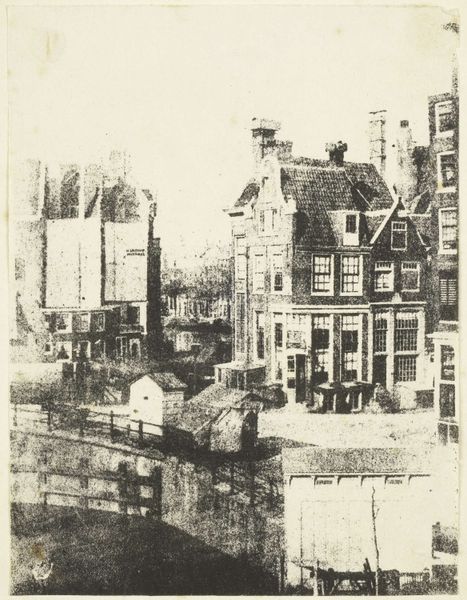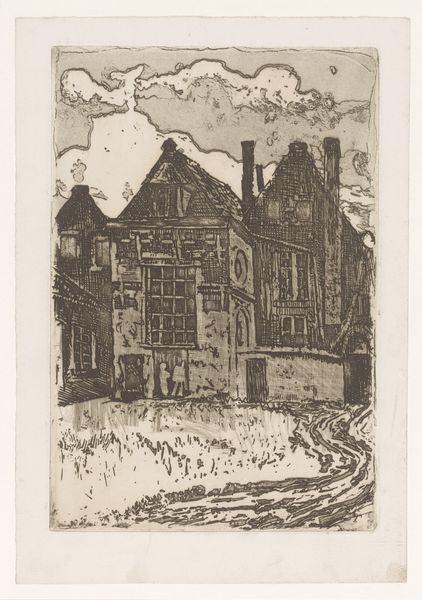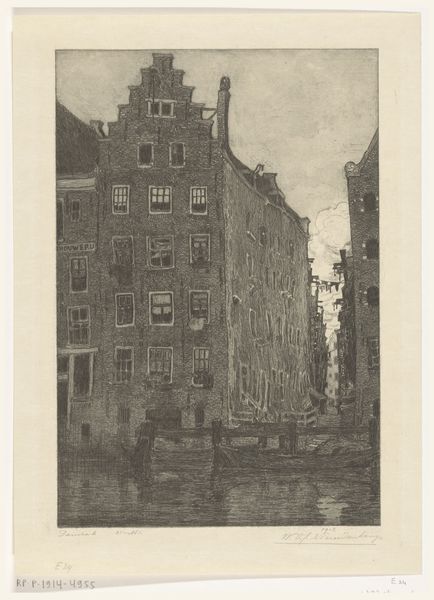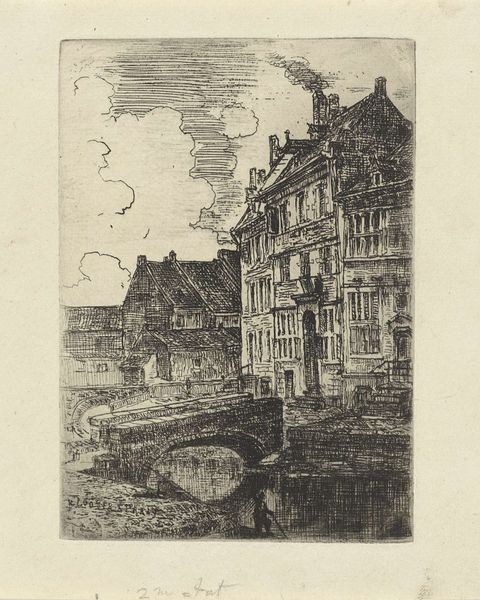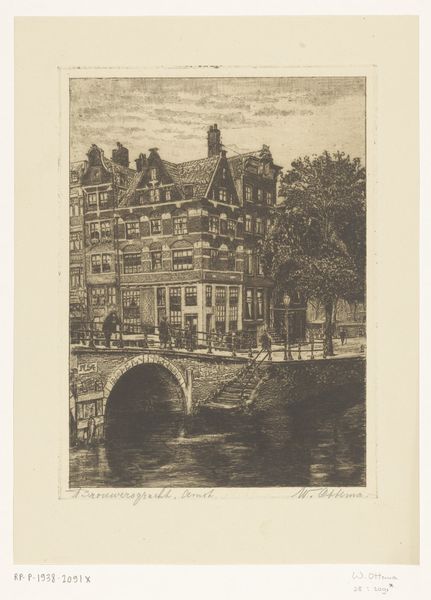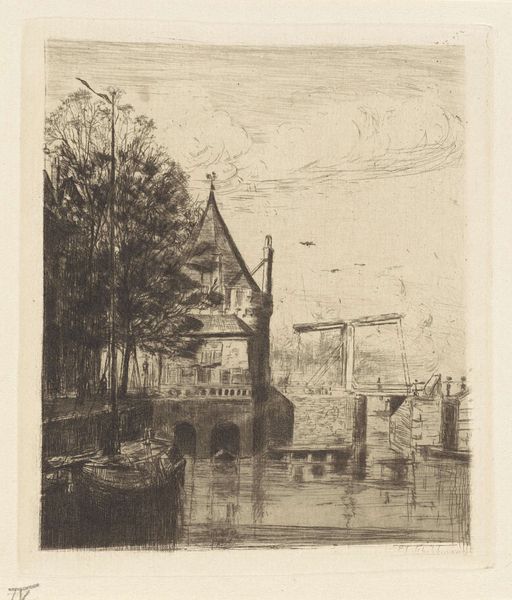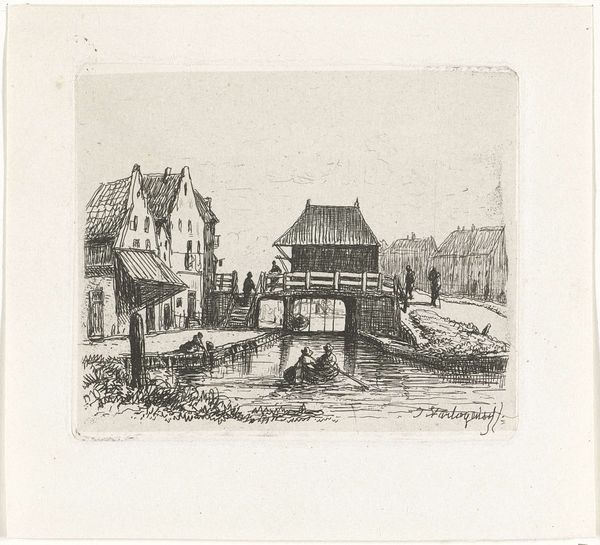
print, etching
#
dutch-golden-age
# print
#
etching
#
old engraving style
#
landscape
#
cityscape
#
realism
Dimensions: height 240 mm, width 156 mm
Copyright: Rijks Museum: Open Domain
Frans Schikkinger made this etching of the Martelaarsgracht in Amsterdam sometime in the late 19th century. He would have begun by covering a copper plate with an acid-resistant waxy ground. Then, using a sharp needle, he scratched away the ground to expose the metal beneath. The plate was then immersed in acid, which bit into the exposed lines, creating grooves. Finally, Schikkinger would have inked the plate, wiped away the excess, and pressed paper against it to transfer the image. The material qualities of the etching process give the image its character: the crisp, precise lines, the subtle gradations of tone, and the overall sense of detail. The architectural forms and the reflections in the water are meticulously rendered. Etching was a popular method for artists to reproduce and distribute their work, making art more accessible to a wider audience, and providing a source of income. Here, the skilled labor of the artist translates directly into a commodity.
Comments
No comments
Be the first to comment and join the conversation on the ultimate creative platform.

